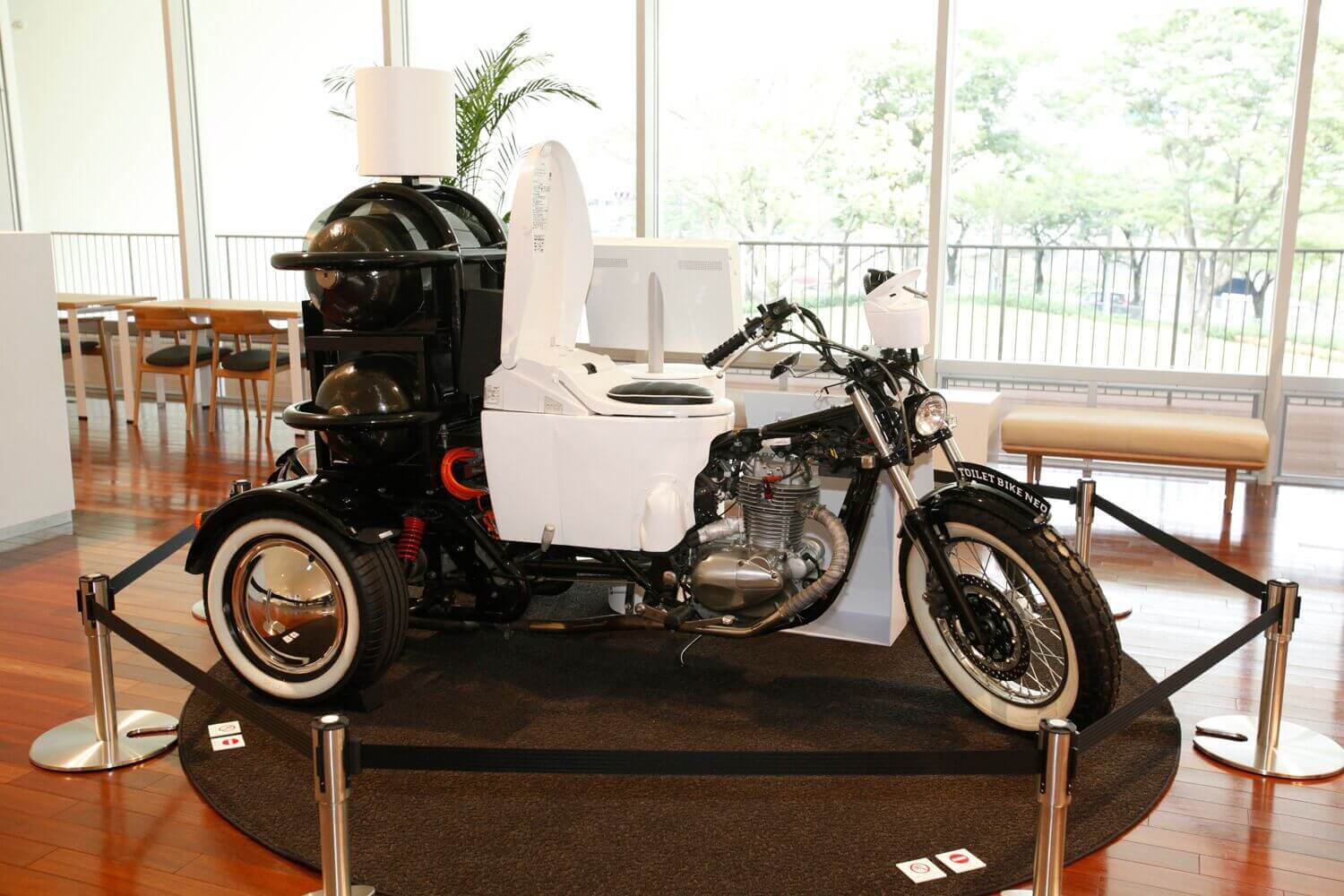Shoes
Travelling around Japan involves a lot of footwear, very little of it your own. It’s common practice to take one’s shoes off when arriving at a guesthouse, hotel or even a restaurant as soon as you are across the threshold. You are then given a pair of indoor slippers to wear – these range from crocs to slip on sandals to Japanese style wooden flip flops, never easy to manoeuvre in especially when wearing Western socks which do not indent at the appropriate junction between the big and second toe.
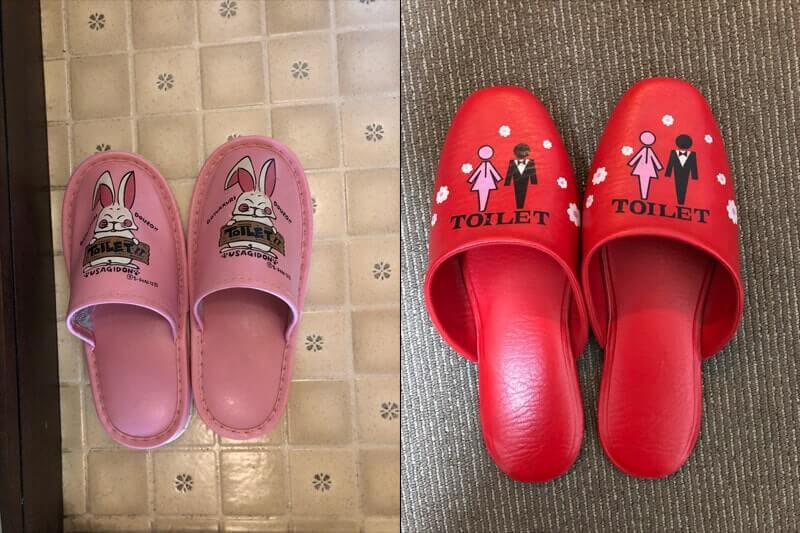 Often there is a vast array of slippers to choose from – they are in pairs but entirely ambidextrous – left or right, take your pick. There are large, medium and small rather than exact sizes so one often finds oneself in a pair of slippers that are a little too loose or a little too tight. This leads to an awkward gait when walking – either clenching the toes to keep them on, or treading gently in case they pinch.
Often there is a vast array of slippers to choose from – they are in pairs but entirely ambidextrous – left or right, take your pick. There are large, medium and small rather than exact sizes so one often finds oneself in a pair of slippers that are a little too loose or a little too tight. This leads to an awkward gait when walking – either clenching the toes to keep them on, or treading gently in case they pinch.
Once you arrive at your room, the floor covering of tatami mats means that the footwear comes off at the door and you can then enter in your socks. However, should you require the toilet, this involves donning another pair of slippers for use within. These are always immediately situated in front of the toilet bowl and are often helpfully labelled ‘toilet’ on each strap, sometimes with the male/female toilet illustration for additional clarity. On they go for the time you spend in the WC, and then back off again when you return to the room.
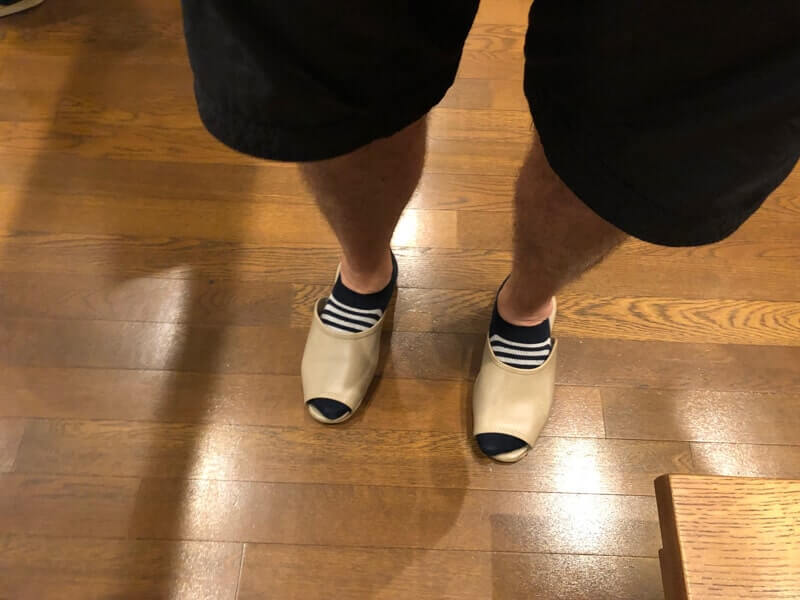 However, if you are using a shared toilet, you will be required to change shoes at the toilet door, and whilst the emphasis is on hygiene, one can’t help but wonder how many other pairs of feet have been wearing the ‘toilet slippers’. In one particularly traditional ryokan (Japanese inn) where I stayed, the pilgrimage to the toilet required slippers when leaving the bedroom to walk 10 paces down the corridor to the shared WC, then a change of footwear into a Japanese version of wooden Dr Scholls at the toilet entrance. Then it was a nervous cloppety-clop across a very uneven rock floor and past the male urinal, until finally arriving at the ladies WC whereupon there was an awkward change of footwear into the toilet slippers whilst balancing on a stone step. This being a very traditional ryokan, the toilet was of the traditional ‘squat and squirt’ variety requiring a low crouch in plastic slippers and careful positioning. Try doing all that at 3am!
However, if you are using a shared toilet, you will be required to change shoes at the toilet door, and whilst the emphasis is on hygiene, one can’t help but wonder how many other pairs of feet have been wearing the ‘toilet slippers’. In one particularly traditional ryokan (Japanese inn) where I stayed, the pilgrimage to the toilet required slippers when leaving the bedroom to walk 10 paces down the corridor to the shared WC, then a change of footwear into a Japanese version of wooden Dr Scholls at the toilet entrance. Then it was a nervous cloppety-clop across a very uneven rock floor and past the male urinal, until finally arriving at the ladies WC whereupon there was an awkward change of footwear into the toilet slippers whilst balancing on a stone step. This being a very traditional ryokan, the toilet was of the traditional ‘squat and squirt’ variety requiring a low crouch in plastic slippers and careful positioning. Try doing all that at 3am!
Toilets
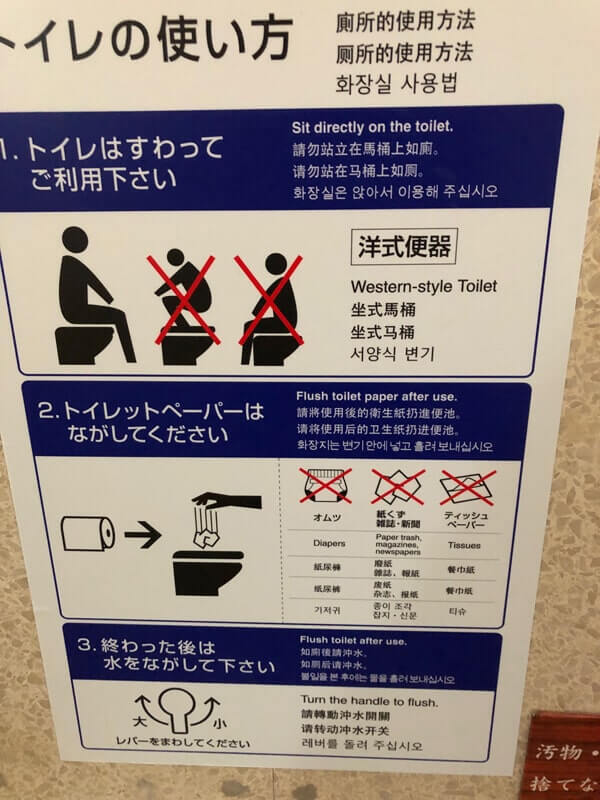 For a middle-aged traveller, the issue of toilets is an important one. Getting up in the middle of the night becomes a regular event, and in general one likes to know that one is not too far from a decent public convenience when travelling.
For a middle-aged traveller, the issue of toilets is an important one. Getting up in the middle of the night becomes a regular event, and in general one likes to know that one is not too far from a decent public convenience when travelling.
Japan can therefore be recommended wholeheartedly as the perfect destination for silver travellers for this reason alone. It’s a country that takes its toilets seriously, and that starts with the provision of public facilities which appear just when you need them, and often when you don’t. Wandering around a city centre, you are never far from the nearest loo, and what’s more they are universally clean, well-maintained and with abundant supplies of toilet paper. The absence of any hand towels or hand dryers was initially a bit of a mystery to me, but it transpires that Japanese people carry their own hand towel in their bag, indeed often in a special bag, so that they can whip it out and ensure theirs are the only hands with which it comes in contact.
![High-tech Japanese toilet by Asacyan [CC BY-SA 4.0] High-tech Japanese toilet by Asacyan [CC BY-SA 4.0]](https://silvertraveladvisor.com/wp-content/uploads/2022/01/by-Asacyan-creative-commons-min1.jpg) Now when it comes to the actual toilet itself, the Japanese version is often marvelled at by Westerners and with good reason. They are works of science and art with every detail taken care of. Walk into the toilet, and before you have even closed the door, up pops the lid automatically ready to welcome you and with a lovely warm seat. Forget your misgivings about warm seats meaning someone else’s posterior has recently vacated. Oh no, this is a heated seat and very pleasant it is too.
Now when it comes to the actual toilet itself, the Japanese version is often marvelled at by Westerners and with good reason. They are works of science and art with every detail taken care of. Walk into the toilet, and before you have even closed the door, up pops the lid automatically ready to welcome you and with a lovely warm seat. Forget your misgivings about warm seats meaning someone else’s posterior has recently vacated. Oh no, this is a heated seat and very pleasant it is too.
A giddying array of up to 32 features on the control panel awaits, and helpful public information boards are on display to guide you through the features and icons. Allow extra time for your first few visits, not least because you will want to sit and study it all, like a museum exhibit. Stage fright? The sound of music and birdsong will ease your transition into full flow. Feel the need for a little extra cleaning? There’s a choice of two buttons and (without wishing to be too graphic), these are for the back and front areas all nicely detailed in graphics on the control panel. You can adjust the strength and flow of the cleaning spray as well as the temperature, pressing the stop and start button whenever you are ready. It’s all quite marvellous and amazing how one becomes accustomed to this additional service, and how long it all takes. A simple visit can last several minutes; it’s practically an excursion in its own right.
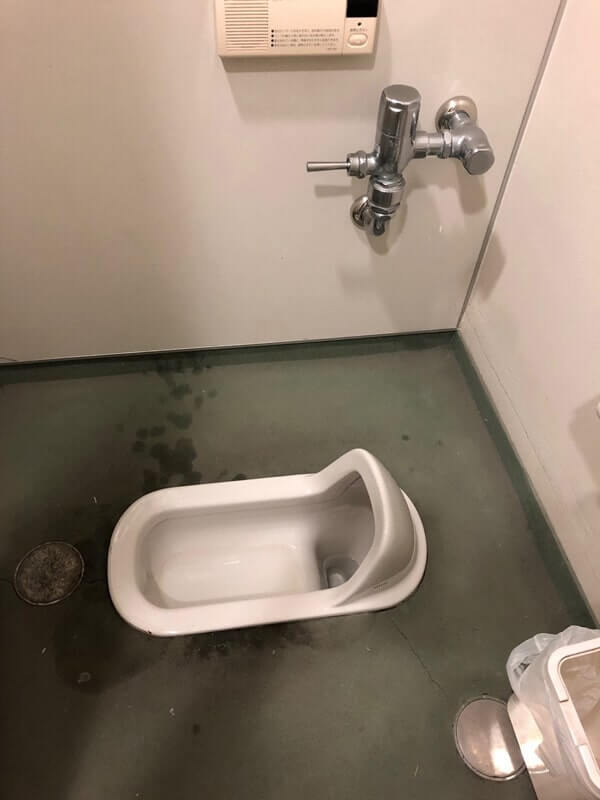 However, a word of warning. These fabulous WCs are not universal in Japan so do not become too accustomed to them. Once out of the major cities, the rural toilets are categorised into ‘Western’ which means a bit more like the kind of toilet we are accustomed to, with the occasional bell and whistle; or ‘Traditional’ and these are to be avoided at all costs. Traditional does not mean quaint, it means an oval-shaped floor-level slightly raised rim, requiring the user to squat in a most ungainly fashion and then do one’s best to aim. This may be well-suited to the Japanese who have spent a lifetime sitting on tatami mats and eating at low tables, and for whom the squatting position is second nature. But for anyone whose knees or hips have seen better days, it’s really not a good idea, and getting back up again without a grab rail in sight, may be somewhat of a stretch.
However, a word of warning. These fabulous WCs are not universal in Japan so do not become too accustomed to them. Once out of the major cities, the rural toilets are categorised into ‘Western’ which means a bit more like the kind of toilet we are accustomed to, with the occasional bell and whistle; or ‘Traditional’ and these are to be avoided at all costs. Traditional does not mean quaint, it means an oval-shaped floor-level slightly raised rim, requiring the user to squat in a most ungainly fashion and then do one’s best to aim. This may be well-suited to the Japanese who have spent a lifetime sitting on tatami mats and eating at low tables, and for whom the squatting position is second nature. But for anyone whose knees or hips have seen better days, it’s really not a good idea, and getting back up again without a grab rail in sight, may be somewhat of a stretch.
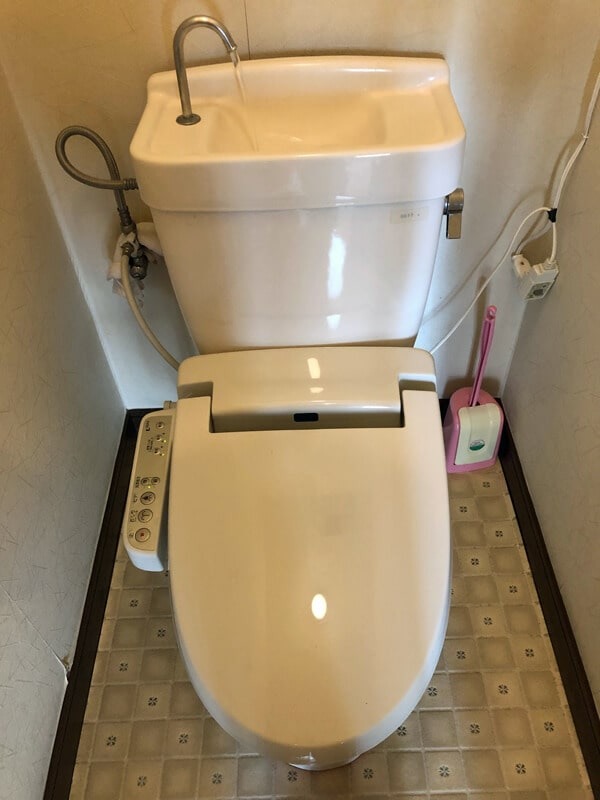 Another interesting variation on the theme is the toilet which has a washbasin built into the back of it. As you flush, the basin automatically starts filling with water. It’s quite a bizarre experience the first time around with the fleeting thought that it’s the same water. Which of course it is not, but it’s certainly a novelty to be washing one’s hands in an integral part of the actual WC!
Another interesting variation on the theme is the toilet which has a washbasin built into the back of it. As you flush, the basin automatically starts filling with water. It’s quite a bizarre experience the first time around with the fleeting thought that it’s the same water. Which of course it is not, but it’s certainly a novelty to be washing one’s hands in an integral part of the actual WC!
And finally, for anyone interested in discovering more about the idiosyncrasies of Japanese toilets, there’s even a dedicated museum entirely dedicated to their evolution. The Toto Museum in Fukuoka Prefecture is a veritable Aladdin’s cave of toilet bowls, urinals and washlets – that’s the trademarked name for the Japanese ‘cleansing’ toilet described earlier. From extra-wide models for sumo wrestlers to retro designs, the Japanese really do think of everything. There’s even a toilet built into a motorbike, so handy for that urgent journey when you really don’t have time to stop. Now that really is going to make a splash.
